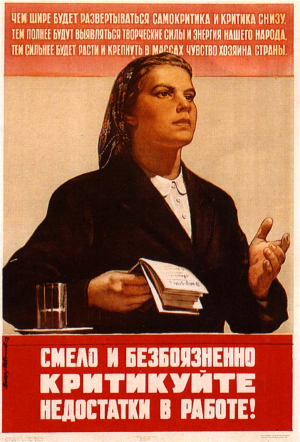Bottlenecks in Paris
This week I was in Paris to host an “I’m not a Bottleneck! I’m a Free Man!” or “A l’aide! Mon Processus m’étrangle!” workshop to help a company to apply the Theory of Constraints.
The workshop is fun and playful. We simulated a team making paper hats and boats. The team got paid in Belgian chocolates. Participants enjoyed learning about The Theory of Constraints. In the retrospective, most participants noted that they liked the relaxed atmosphere, the fun way of learning and the friendly cooperation.
And yet, there were a few moments where the participants felt uncomfortable and voiced their disagreement with the material.
Say NO to the exploitation of bottlenecks!
Step 2 of the “Five Focusing Steps” tells us to exploit the bottleneck. As the throughput of the system is determined by the throughput of the bottleneck, we need to do everything we can to increase the throughput of the bottleneck. We need to get as much value out of the bottleneck as possible.
When I asked the participants how we could exploit the bottleneck in the game, many people bristled at the suggestion. They felt I was trying to ‘squeeze’ the unfortunate worker who was (by design) the bottleneck of the game. To them, this smacked of “Taylorism” or “Fordism“.
It took some convincing and explaining to get the participants to look for ways to exploit their overworked, stressed and sweating colleague. Adding more people seemed like a simpler and more powerful improvement technique.
Go on, exploit the bottleneck! It’s just a game.
Now, what did the team come up with to get more output from the bottleneck? How did we make the bottlenecks in the game and in the real processes more productive?
- Ensure that there’s a small buffer of work in front of the bottleneck, so that the bottleneck is never idle due to lack of input. Install a ‘pull’ system so that whatever the bottleneck needs arrives just-in-time when the bottleneck needs it.
- Reduce interruptions, so that the bottleneck can stay concentrated on their task and get into the “Flow state“.
- Reduce task switching. Finish each task before starting on another. Focus on the task at hand and don’t worry about upcoming tasks.
- Prioritise the work to be done by the bottleneck, so that they always work on the task that brings the most value.
- Reduce waste in the bottleneck’s work, so that the bottleneck doesn’t spend time on non-value adding work.
- Ensure that the inputs and tools of the bottleneck are of the highest quality so that they don’t waste their time finding and correcting errors or dealing with machine breakdowns.
- Even out the workload (Heijunka) to combat the waste of unevenness (Mura) and overburdening (Muri)
At the end of the day, each team had several exploitation ideas that they could work out the next day. Exploiting the bottleneck is usually quite easy as it doesn’t require investment and doesn’t involve many people.
And yet, these simple changes can add a lot of value. For example, we recently almost doubled the productivity of a development team by installing some simple measures to reduce interruptions and by prioritising work better so that there was less task switching.
If that’s what “being exploited” means, you can exploit me too!
The result of all that exploiting? A bottleneck that’s less stressed and less overworked and yet has higher productivity. A bottleneck that can concentrate on their job without all those energy-sapping distractions and wastes. In their final retrospective, the team that doubled their productivity noted that this project was a lot less stressful than their usual projects.
Participants in the workshop learned that there are better, easier and cheaper ways to improve processes than to add more people. They learned that “exploiting” in the Theory of Constraints is very beneficial to the bottleneck, despite the negative connotations of the word.
Would a “softer” word have helped? Would another word evoke less resistance? I used to think so. Now, I think that we need to go through that resistance that the word exploit evokes. If we let the participants of the workshop optimise the game’s process on their own, they will probably get no further than throwing more bodies at the problem. The Theory of Constraints is simple, but its consequences are counter-intuitive. By dealing with the resistance to the idea early, participants learn to break through their existing patterns. Having seen Eli Goldratt in action, I appreciate he’s no proponent of the “softly, softly” approach.
And it gets better
After participants have accepted the exploit step, we move on to “Subordinate every other decision to the bottleneck”, which leads to another set of counter-intuitive ideas. For example, the participants learned that they could get more output from their processes by slowing down certain people.
Resistance in Amsterdam
Lean has another set of counter-intuitive yet effective ideas. On Friday, the suggestion that “Standardized Work” could be useful in IT was met with strong resistance by participants of the Agile Holland conference. More about that later.
I’m starting to enjoy resistance. In my experience, resistance from myself and others means that we’re on the right way, that we’re trying to do something different. Because if we want to get a different result, we will have to do something different.
What have you resisted this week? Now imagine that the thing you resist is not your enemy but your friend. What would the world look like if that were true?
You can download the Bottleneck Game from the Agile Coach site.
![]() The “I’m not a Bottleneck! I’m a Free Man!” game by Pascal Van Cauwenberghe and Portia Tung is licensed under a Creative Commons Attribution-Share Alike 2.0 Belgium License.
The “I’m not a Bottleneck! I’m a Free Man!” game by Pascal Van Cauwenberghe and Portia Tung is licensed under a Creative Commons Attribution-Share Alike 2.0 Belgium License.
Image courtesy of ‘Freedom Toast‘, licensed Creative Commons, Attribution Non-Commercial.
